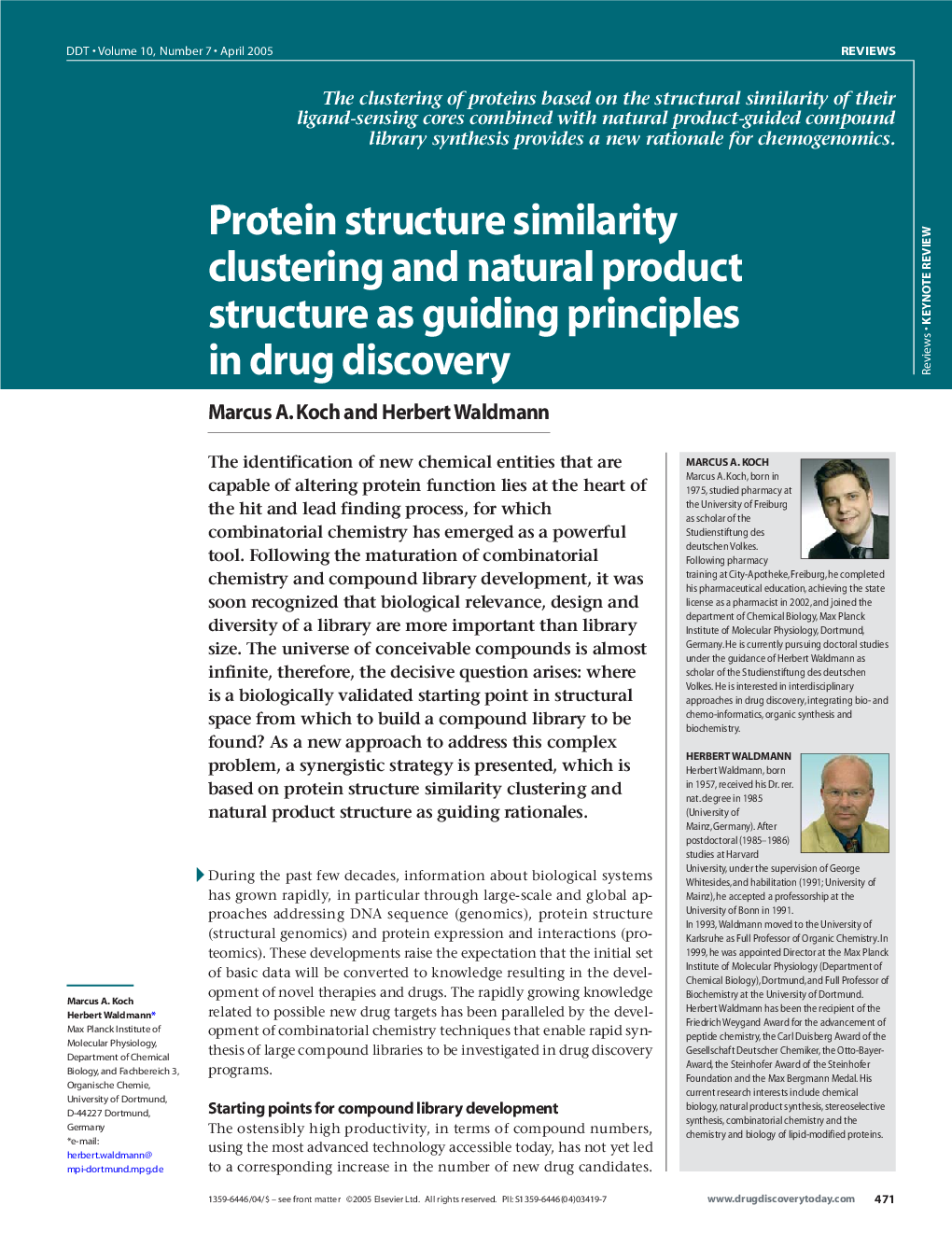| Article ID | Journal | Published Year | Pages | File Type |
|---|---|---|---|---|
| 10888091 | Drug Discovery Today | 2005 | 13 Pages |
Abstract
The identification of new chemical entities that are capable of altering protein function lies at the heart of the hit and lead finding process, for which combinatorial chemistry has emerged as a powerful tool. Following the maturation of combinatorial chemistry and compound library development, it was soon recognized that biological relevance, design and diversity of a library are more important than library size. The universe of conceivable compounds is almost infinite, therefore, the decisive question arises: where is a biologically validated starting point in structural space from which to build a compound library to be found? As a new approach to address this complex problem, a synergistic strategy is presented, which is based on protein structure similarity clustering and natural product structure as guiding rationales.
Keywords
Related Topics
Life Sciences
Biochemistry, Genetics and Molecular Biology
Biotechnology
Authors
Marcus A. Koch, Herbert Waldmann,
